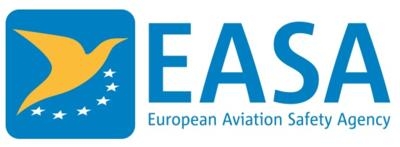Mon, Mar 30, 2020
Thermal Runaway May Lead To Fire
EASA has issued a Safety Information Bulletin (SIB) for lithium batteries installed on multiple models of Emergency Locator Transmitters installed aboard airliners.

These ELT and battery packs are known to be installed on, but not limited to Certification Specification CS-23 and CS-25 aeroplanes, CS-27 and CS-29 helicopters, or equivalent certification regulations, i.e. Federal Aviation Regulations (FAR) or Joint Aviation Requirements (JAR). Some of these ELT and battery packs may also be carried on board of an aircraft by the operator without being installed as an element of the aircraft's type design.
According to the SIB, The affected ELT and battery packs, in case of a thermal runaway, may release gases on fire. As this fire eventually self-extinguishes, the design remains compliant with the criteria of Appendix 1 of ETSO-C142a. Nevertheless, the presence of fire may affect the performance of the surrounding equipment, especially when the ELT is located close to safety equipment such as flotation devices.
EASA recommends holders of a type design approval (type certificate) or design change approval (supplemental type certificate, or minor change approval) to consider the presence of fire in addition to hot gases in assessing the effect at aircraft level of battery failures for the articles listed in the Applicability section of this SIB. This assessment should explicitly include the effect of fire or hot gases impingement on any stowed safety equipment installed in proximity of the battery such as life rafts, life jackets or emergency floatation systems. The EASA Special Condition on ‘Nonrechargeable Lithium Battery Installations’ provides additional considerations (also valid for CS-23, CS-27, CS-29 aircraft) to perform this assessment.
EASA recommends operators of aircraft that have any affected ELT or battery pack(s) carried on board which are not part of the approved aircraft type design, or design change, as applicable, to ensure that the presence of fire (in case of an ELT battery failure) cannot propagate to the surrounding material.
EASA recommends the use of an ELT model equivalent to those listed in the Applicability section of this SIB, but approved in accordance with RTCA DO-227A (as shown by an ETSO authorisation in accordance with ETSO-C142b or with ETSO-C142a with a deviation to use RTCA DO-227A) for the battery aspects.
(Source: EASA)
More News
He Attempted To Restart The Engine Three Times. On The Third Restart Attempt, He Noticed That Flames Were Coming Out From The Right Wing Near The Fuel Cap Analysis: The pilot repor>[...]
Make Sure You NEVER Miss A New Story From Aero-News Network Do you ever feel like you never see posts from a certain person or page on Facebook or Instagram? Here’s how you c>[...]
From 2009 (YouTube Edition): Leading Air Show Performers Give Their Best Advice for Newcomers On December 6th through December 9th, the Paris Las Vegas Hotel hosted over 1,500 air >[...]
Aero Linx: NASA ASRS ASRS captures confidential reports, analyzes the resulting aviation safety data, and disseminates vital information to the aviation community. The ASRS is an i>[...]
“For our inaugural Pylon Racing Seminar in Roswell, we were thrilled to certify 60 pilots across our six closed-course pylon race classes. Not only did this year’s PRS >[...]
 NTSB Final Report: Rutan Long-EZ
NTSB Final Report: Rutan Long-EZ ANN FAQ: Turn On Post Notifications
ANN FAQ: Turn On Post Notifications Classic Aero-TV: ICAS Perspectives - Advice for New Air Show Performers
Classic Aero-TV: ICAS Perspectives - Advice for New Air Show Performers ANN's Daily Aero-Linx (06.28.25)
ANN's Daily Aero-Linx (06.28.25) Aero-News: Quote of the Day (06.28.25)
Aero-News: Quote of the Day (06.28.25)



